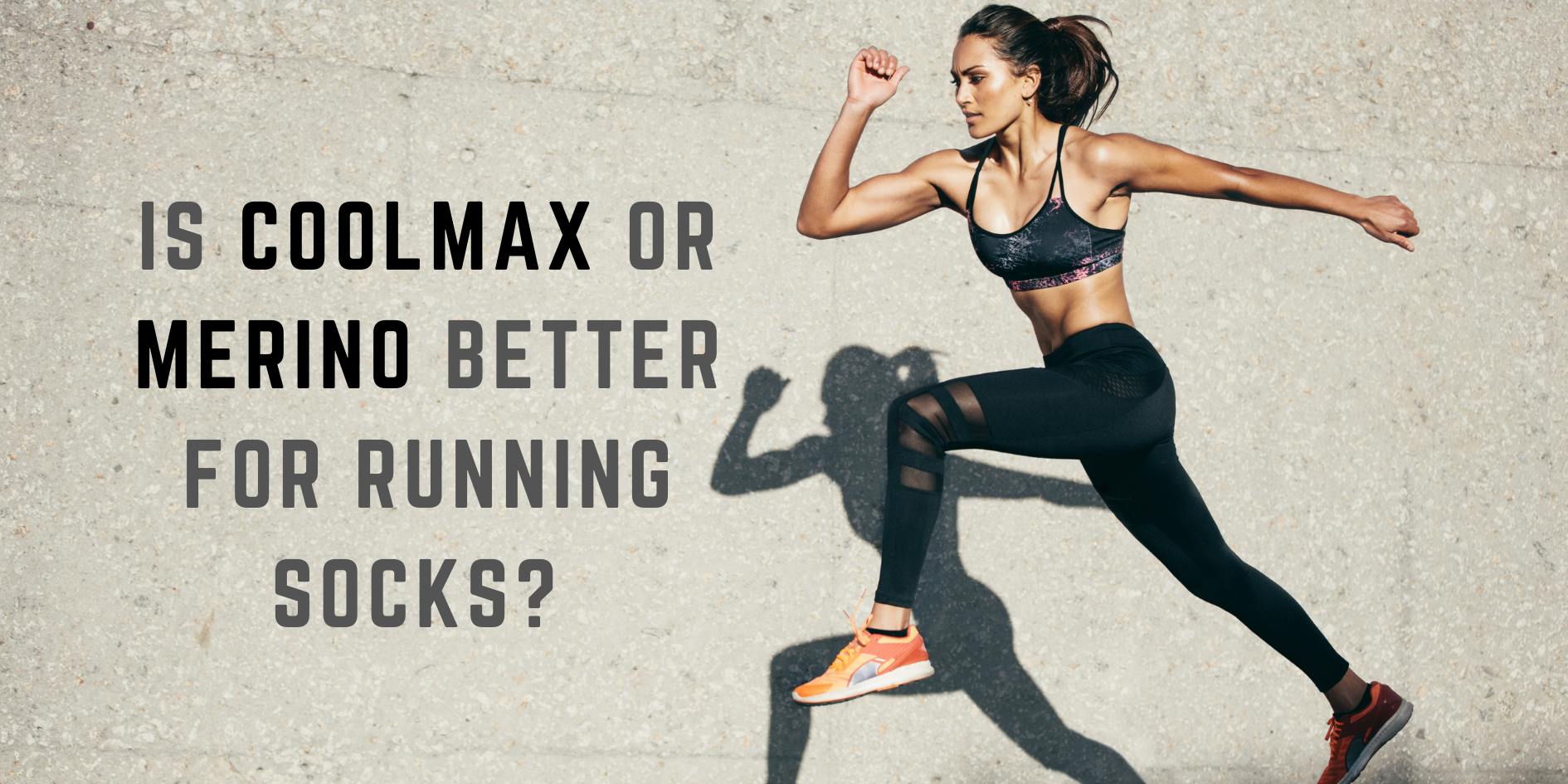Is Coolmax or Merino Better for Running Socks? We went deep…
Merino wool has made it into the mainstream for big apparel and footwear brands but we had to ask the question. Is it being used for sustainability, a green look, and a lower carbon footprint, or is it a superior fiber? Should it be used over “high-tech” synthetic fibers such as Coolmax?
Don’t get me wrong, creating athletic wear sustainably is important, but on those long runs in the hills or long days in the office, I want them to perform well too. I’ve got you the answer to that and more and have done the research, whittled it down, and summarized it so that you don’t have to.
I’ve always loved the softness of merino yarn, but is it the BEST? I’ll get to that shortly (skip to the TLDR at the bottom if extremely short on time).

Merino is now being utilized for a huge range of athletic wear and there’s constantly more entering the market. Allbirds base their shoes solely around merino wool, Mons Royale pile it into their clothes, Icebreaker are now doing merino underwear and bras and here all of our Toe Socks have 50% merino wool. There’s a lot more I could list but don’t worry, I’m all about getting to the point because I bet you’ve asked yourself before, is the premium price tag that is placed on merino socks and clothing worth it?
You’ve all seen the marketing and emails. It's nature’s super fiber. It’s lightweight and regulates temperature and moisture. It even reduces smelly feet!
It sounds like the whole bloody package! Material that is comfortable hot or cold. lightweight, better for the environment and you don’t even have to wash it as often. It’s a marketer's dream!
But the question remains, how does it stack up against engineered fibers like Coolmax, Nylon, and polyamide. Let’s get into it…

Moisture-wicking ability
Coolmax is one of the best at wicking moisture (from this study) due to how the fiber is shaped with lots of channels along the length of the fiber for moisture to be drawn through like little blood vessels. This only happens well if there is a gradient - More positive inside your sock than outside. When the gradient isn’t there or if there’s just a little moisture, it won’t happen as well.
With merino wool, we do get good moisture regulation (and with that, temperature also) but it isn’t done the same way. Instead of having synthetically created channels like Coolmax, merino wool fibers have a double layer to work their magic.
The inner core of the wool is moisture-loving so it draws moisture into it and away from your feet. the outer surface of merino wool is not moisture-loving (hydrophobic) and so this keeps a dry feel. The wool can hold up to a 3rd of its weight in moisture locked away inside and still feel dry and at the same time, that moisture can slowly evaporate away.
We prefer merino over synthetic fibers because of this. Why?
While synthetic fibers draw away only excess moisture, wool is very absorbent and actively sucks moisture into it and away from the skin. Thanks to its high keratin content, it’s bloody awesome at this.
So that’s the difference between merino and the most popular synthetic fiber used - they all help regulate moisture but do it in different ways and we feel, a combination of merino wool and synthetic fibers gets the best of both worlds. That’s why we utilize a 50/50 ratio of ultra-fine merino to synthetic fiber in our socks, that way it’s a win-win and optimized for performance.
Merino dries fast. Doesn’t it?
That’s the claim and the research certainly backs this up, showing that wool dries faster than both polyester and Coolmax(2)
Fast-drying or better moisture-wicking? What’s more important…
In case we lost you on the last couple of points:
Merino is the best at absorbing moisture away from the skin, keeping skin dry BUT synthetic fibers like Coolmax, wick moisture best. To add to that confusion, wool dries FASTER.
Ahhhhhhh!
So, do we want merino, which drays moisture away by absorbing it slowly, keeping you feeling dry? Or do you want a fabric that draws excess moisture through it but drys slower?
To be fair, merino wool and synthetic fibers both have their benefits and it’d be silly to go 100% into just one of them and miss the benefits from the other.
TLDR
Yes, Merino wool yarn is a super fiber and it’s worth the price tag.
Positives:
- Draws posture away from your skin, keeping a dry feel
- Naturally, odor resistance by locking away sweat molecules inside the fibers
- Lightweight and ultra-fine means they perform well and won’t slow you down
- Lower friction coefficient that synthetic fibers = fewer hot spots and blisters
- Environmentally friendly - especially when the merino wool is certified responsible wool
- Dries fast than other fibers and synthetics
Negatives
- The fabric can pill over time
- Shrinks if accidentally put in hot wash or dryer
- Doesn't wick moisture as fast as synthetic yarns
Choose socks with blended yarn to get the best of both worlds.
Ideally, choose merino toe socks that wrap every toe in a blister-busting, moisture-absorbing membrane and you won’t regret it.


